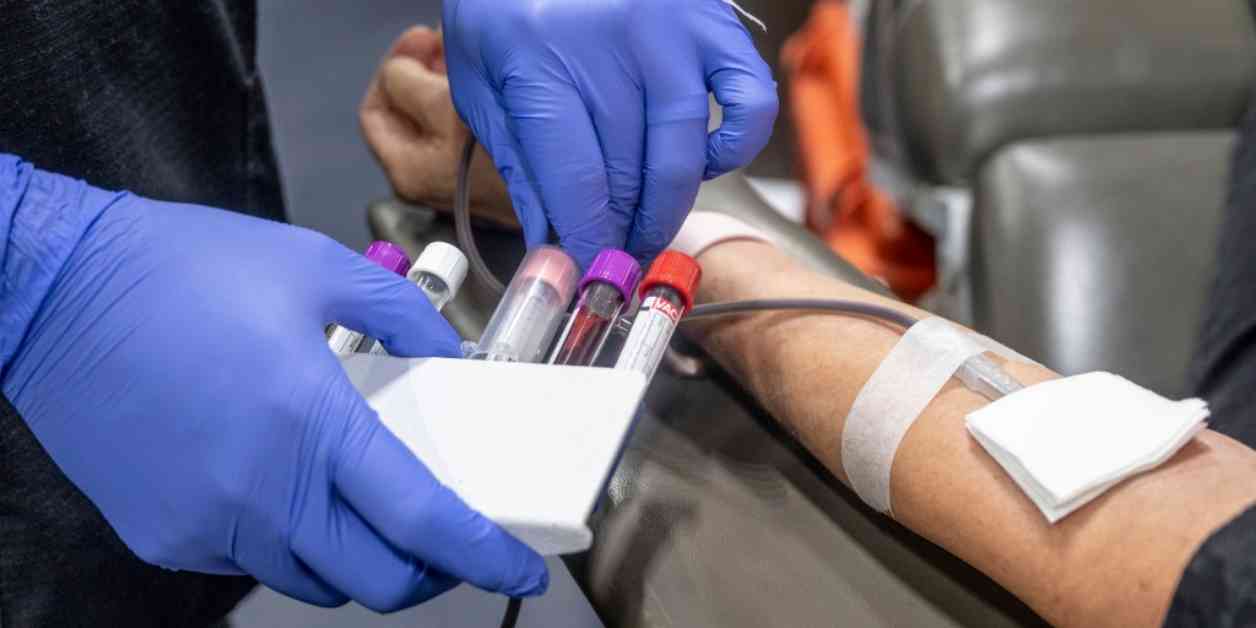Iron Deficiency in U.S. Adults: Study Reveals 1 in 3 Affected
Nearly one in three Americans may be suffering from an undiagnosed iron deficiency, a condition that can lead to a range of symptoms including fatigue, brain fog, and difficulty concentrating. A recent study analyzing data from over 8,000 adults in the U.S. found that 14% had low iron blood levels, known as absolute iron deficiency, while 15% had the right iron levels but were unable to use the essential mineral properly, a condition known as functional iron deficiency. These findings were published in JAMA Network Open.
The researchers behind the study were not surprised by the results, as previous studies had hinted at the possibility of iron deficiency being more widespread than previously assumed. Study co-author Leo Buckley, a clinical pharmacology specialist at Brigham and Women’s Hospital in Boston, emphasized the importance of their research focusing on regular people who would not typically be screened or tested for iron deficiency.
Dr. Andrew Eisenberger, an associate professor of medicine at the Columbia University Vagelos College of Physicians and Surgeons, highlighted the impact of iron deficiency on quality of life, stating that while it is almost never life-threatening, it can significantly affect a person’s ability to function at their best. He emphasized the need for increased awareness among both doctors and patients regarding the prevalence of iron deficiency.
The study, conducted by researchers at Brigham and Women’s Hospital, analyzed health information from the National Health and Nutrition Examination Survey collected between 2017 and 2021 from 8,021 adults. The average age of participants was 48, and none had a health condition typically associated with iron deficiency, such as anemia, kidney disease, heart failure, or pregnancy.
Risk Factors for Iron Deficiency
One of the most significant risk factors for iron deficiency is being female. Pregnant women are especially vulnerable, as the average pregnant woman requires 1,000 to 1,500 milligrams of additional iron. Dr. Eisenberger noted that many pregnant women do not have their iron levels checked until late in pregnancy, which can have negative effects on both the mother and the fetus.
Postpartum women are also at risk of iron deficiency, as are individuals who experience heavy menstrual bleeding. Dr. Johanna Contreras, an advanced heart failure and transplant cardiologist at the Mount Sinai Fuster Heart Hospital in New York City, emphasized the importance of addressing iron depletion in these populations.
Additionally, certain diets, such as vegetarian or vegan diets, can leave individuals with low iron levels. Dr. Hossein Ardehali, director of the Cardiovascular and Renal Research Institute at the Northwestern University Feinberg School of Medicine, pointed out that red meat is the best food source of iron due to its heme content. Other dietary sources of iron include seafood, shellfish, beans, dark green leafy vegetables, raisins, apricots, and iron-fortified foods like cereals.
Consequences of Iron Deficiency
While research has not definitively linked iron deficiency to serious long-term health consequences, there are potential risks associated with the condition. Severe anemia can lead to complications such as fainting, strokes, or heart attacks, although these outcomes are rare. Iron deficiency can also be a sign of underlying health issues, including bleeding in the digestive tract or colorectal cancer.
Dr. Ardehali noted that functional iron deficiency can serve as a marker for poor health conditions, such as heart failure. It is important for individuals experiencing symptoms of iron deficiency, such as fatigue and brain fog, to consult with their healthcare providers for proper evaluation and treatment.
Conclusion
Iron deficiency is a prevalent yet often overlooked public health issue that can have a significant impact on an individual’s quality of life. The findings of the recent study underscore the importance of increased awareness and screening for iron deficiency, especially among at-risk populations such as pregnant women, postpartum women, and individuals with certain dietary restrictions. By recognizing and addressing iron deficiency early on, healthcare providers can help improve the overall health and well-being of their patients.

















